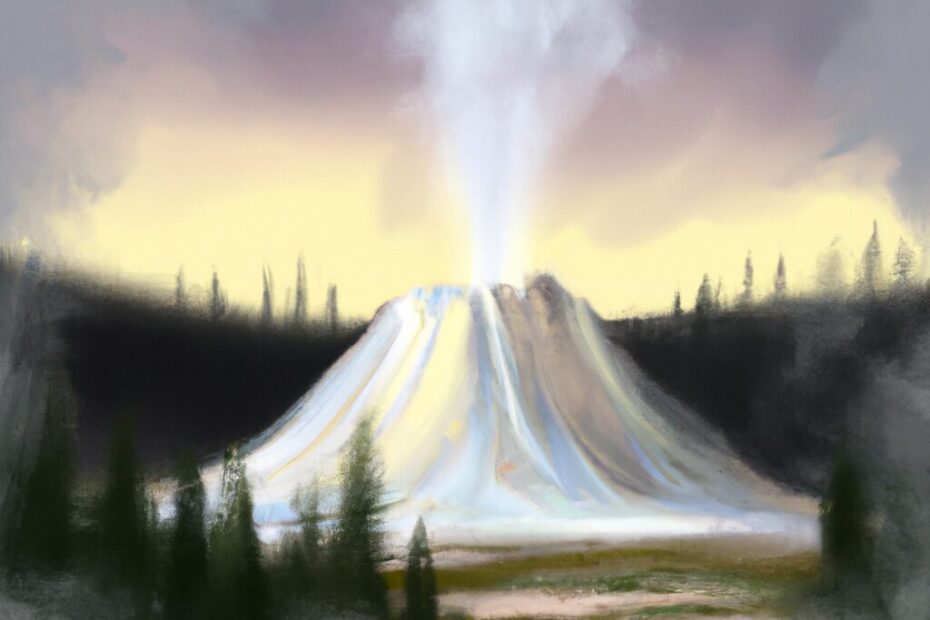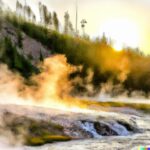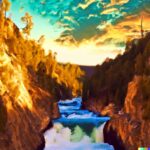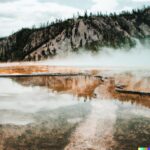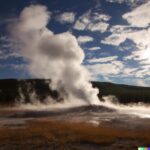Have you ever wondered what makes geysers erupt or why Yellowstone National Park’s geysers are so unique? In this article, we will explore the formation of geysers, the factors that make Yellowstone’s geysers one-of-a-kind, and the most famous geysers in the park, including Old Faithful and Grand Geyser. We will also discuss the frequency of geyser eruptions in Yellowstone, the best times to see them, and how visitors can safely observe these natural wonders.
It’s important to be aware of the potential dangers of approaching geysers in the park. Join us as we uncover the fascinating world of Yellowstone’s geysers.
Full Yellowstone Geyser Guide
Browse our directory below to learn more about Yellowstone National Park geysers.
- Introduction to Yellowstone Geysers
- History of Geysers in Yellowstone
- Geological Formation of Yellowstone Geysers
- Famous Geysers in Yellowstone: Old Faithful
- Famous Geysers in Yellowstone: Grand Geyser Basin
- The Science Behind Geyser Eruptions
- The Cultural Significance of Yellowstone Geysers
- The Environmental Impact of Geothermal Activity
- Visiting Yellowstone Geysers: Tips and Recommendations
Key Takeaways
- Yellowstone National Park is home to some of the most unique and well-known geysers in the world.
- The park’s geysers are formed due to the combination of the Yellowstone Caldera, hydrothermal system, and hotspot volcano.
- To safely observe geysers, visitors should follow park guidelines and avoid approaching them as they can be dangerous.
What Are Geysers?
Geysers are natural hydrothermal features found in various locations, including Yellowstone National Park, characterized by intermittent eruptions of hot water and steam.
These remarkable geothermal phenomena typically occur in areas with volcanic activity, where underground water meets hot rocks and boils, creating pressure that results in periodic explosions of water and steam. The iconic Old Faithful geyser in Yellowstone is renowned for its predictability, erupting approximately every 90 minutes. Another standout example is the Grand Prismatic Spring, known for its vibrant colors due to the presence of microbial mats around its edge.
Read More: View all articles in the Geyser Guide category
How Do Geysers Form?
Geysers form through a complex process involving underground hydrothermal systems, where hot water from geothermal reservoirs rises through fractures and interacts with cooler near-surface water, creating pressure that leads to periodic eruptions.
This fascinating process is driven by the intense heat generated by the Earth’s core, which warms the underground water and creates the necessary conditions for geyser formation. The stored heat in the geothermal reservoirs acts as the key heat source for this phenomenon. As the hot water rises, it can accumulate in underground chambers, building up pressure until it ultimately forces its way to the surface in a powerful eruption.
Scientists monitor the behavior of geysers closely to better understand the underlying geological structures and predict future eruptions. By analyzing the patterns of activity, such as intervals between eruptions and the volume of water expelled, researchers can gain insights into the dynamics of these captivating natural wonders.
What Makes Yellowstone National Park’s Geysers Unique?
Yellowstone National Park’s geysers are unique due to the geological forces at play, creating a diverse landscape of hydrothermal features that include iconic geysers like Old Faithful and Grand Prismatic Spring.
The geological forces in Yellowstone National Park have sculpted a mesmerizing network of interconnected hydrothermal systems, feeding the geysers that dot the landscape. These hydrothermal features are not isolated but rather part of a dynamic ecosystem where water, heat, and minerals interact to create the breathtaking spectacles visitors marvel at. Yellowstone’s geyser basins, such as the Norris Geyser Basin and Upper Geyser Basin, showcase the sheer diversity of these natural wonders, each with its own characteristics and charm.
The Yellowstone Caldera
The Yellowstone Caldera, a massive volcanic crater, underlies Yellowstone National Park and serves as a significant source of geothermal activity, contributing to the formation of the park’s renowned geysers.
This caldera, formed by a massive volcanic eruption nearly 640,000 years ago, plays a crucial role in shaping the hydrothermal landscape of the park. The immense heat generated by the magma chamber beneath the caldera heats the water underground, creating a network of boiling hot springs and geysers. The pressure build-up within the underground water reservoirs, caused by the superheated rocks, results in the spectacular geyser eruptions that captivate visitors from around the globe.
The Hydrothermal System
Yellowstone’s hydrothermal system comprises a network of underground reservoirs and conduits that transport hot water, allowing for the prediction of geyser eruptions based on monitoring various indicators.
These indicators can include changes in water temperature, seismic activity, and gas emissions, all of which offer clues about the behavior of geysers within the park. By closely monitoring these factors, geologists and park rangers can better anticipate geyser eruptions, minimizing the risk to visitors and enhancing overall safety.
The Hotspot Volcano
Yellowstone National Park sits atop a hotspot volcano, where magma chambers beneath the surface fuel geothermal activity, resulting in the spectacular eruptions witnessed at various geysers with varying heights.
The relationship between Yellowstone’s geysers and the hotspot volcano is a dynamic interplay of geological forces. The volcanic activity plays a pivotal role in determining the height, frequency, and duration of geyser eruptions. For instance, the closer a geyser is to the hotspot, the more likely it is to have frequent and powerful eruptions. This volcanic influence is what sustains the park’s unique hydrothermal features, creating a breathtaking landscape that attracts visitors from around the world.
What Are the Most Famous Geysers in Yellowstone National Park?
Yellowstone National Park boasts several iconic geysers, with Old Faithful, Grand Prismatic Spring, and other renowned geothermal features attracting visitors with their spectacular eruptions and vibrant colors.
Old Faithful, known for its reliable and frequent eruptions, shoots water up to 184 feet into the air approximately every 90 minutes, captivating onlookers with its impressive display. On the other hand, the Grand Prismatic Spring stands out for its stunning rainbow-like colors created by the different types of bacteria thriving in its mineral-rich waters.
When visiting these geysers, tourists can witness nature’s power while gaining a deeper understanding of Yellowstone’s unique ecosystem. The geysers not only provide awe-inspiring sights but also play a crucial role in regulating the park’s hydrothermal systems and supporting diverse forms of microbial life.
Old Faithful
Old Faithful is perhaps the most famous geyser in Yellowstone National Park, known for its predictable eruptions and impressive heights that captivate visitors with displays lasting several minutes.
The geyser earned its name due to its faithful and dependable nature, erupting approximately every 90 minutes, making it one of the most consistent geysers in the world. Its eruptions typically shoot water and steam to heights ranging from 100 to 185 feet, drawing awe and wonder from onlookers. Old Faithful’s reliability is attributed to the vast underground reservoir that feeds it, maintaining a delicate balance of pressure and temperature that contributes to its iconic eruptions.
Grand Geyser
Grand Geyser, located in the Upper Geyser Basin, is one of Yellowstone’s largest geysers, known for its majestic eruptions and the unique beauty of its surrounding geyser basin.
The geothermal wonders of the Yellowstone National Park are truly exemplified by the incredible presence of Grand Geyser. Situated amidst the vibrant hydrothermal activity of the region, Grand Geyser stands out not only because of its sheer size but also due to its intricate eruption patterns that captivate visitors from all around the world. Erupting on a predictable schedule, the geyser creates a spectacle that mesmerizes onlookers, painting the sky with bursts of boiling water and steam that reach impressive heights. The geological formations surrounding Grand Geyser, including colorful mineral pools and terraces, add to the allure of this natural marvel.
Castle Geyser
Castle Geyser, situated in the Upper Geyser Basin, is renowned for its distinctive cone shape and periodic eruptions that can be predicted based on observable signs, offering visitors an opportunity to witness its natural spectacle.
The cone structure of Castle Geyser not only adds to its visual appeal but also plays a crucial role in the eruption dynamics. This iconic feature helps contain the pressure build-up before erupting, resulting in a powerful and awe-inspiring display of geothermal activity.
Scientists and park rangers closely monitor the geyser’s behavior to provide estimated eruption times, allowing visitors to plan their visit accordingly. It is fascinating how nature’s intricate mechanisms allow for such predictability amidst the unpredictable backdrop of geothermal wonders.
Beehive Geyser
Beehive Geyser, located in the Upper Geyser Basin, captivates visitors with its cone-shaped structure and sporadic eruptions that project water and steam high into the air, creating a mesmerizing spectacle.
Visitors often stand in awe as they witness the transformation of this incredible natural wonder. The eruptions of Beehive Geyser are known to reach heights of around 150 to 200 feet, making it a remarkable sight to behold. Its distinct cone shape adds to its allure, standing out amidst the surrounding geothermal features. The geyser’s explosive display is a reminder of the powerful forces at work below the Earth’s surface, drawing in tourists from far and wide.
Steamboat Geyser
Steamboat Geyser, located in the Norris Geyser Basin, holds the distinction of being the world’s tallest active geyser, with eruptions that can reach incredible heights and create a spectacle that mesmerizes onlookers.
Its eruptions can soar up to three times the height of Old Faithful, another famed geyser in the same park, reaching heights of over 300 feet, making them a breathtaking sight to behold. What sets Steamboat Geyser apart is not just its record-breaking eruption heights, but also its unpredictable eruption frequency. Unlike regular geysers that follow a relatively predictable schedule, Steamboat Geyser can lie dormant for years before suddenly bursting back to life in a powerful display of geothermal activity.
How Often Do Geysers Erupt in Yellowstone National Park?
Geysers in Yellowstone National Park exhibit varying eruption frequencies, with some like Old Faithful erupting at regular intervals, while others, such as Steamboat Geyser, have more unpredictable and infrequent eruptions.
Factors such as underground water circulation, temperature gradients, and mineral deposition influence the timing and predictability of geyser eruptions. While geysers like Castle Geyser might erupt every 10-12 hours, Grand Geyser’s intervals can range from 7 to 15 hours. These variations showcase the dynamic nature of geothermal activity in the park. In contrast, Beehive Geyser can go days or even weeks between eruptions, adding an element of surprise to its display. Understanding these diverse eruption patterns adds to the fascination of exploring Yellowstone’s unique geysers.
What Are the Best Times to See Geysers in Yellowstone National Park?
The best times to see geysers in Yellowstone National Park vary depending on the geyser’s eruption schedule, with visitors often advised to check the predicted eruption times for popular geysers like Old Faithful to maximize their viewing experience.
These eruption predictions are crucial for visitors planning their day around witnessing these natural wonders in action. By aligning one’s visit with the expected eruption times, you can significantly increase the likelihood of enjoying a breathtaking geyser display. Understanding the geyser patterns can also help in managing your overall schedule within the park, ensuring you make the most of your time exploring the various attractions.
The park resources, such as ranger-led tours and information centers, play a vital role in guiding visitors to the best-viewing spots and providing educational insights on the geothermal features.
How Can Visitors Safely Observe Yellowstone’s Geysers?
Visitors can safely observe Yellowstone’s geysers by following designated viewing areas, respecting park guidelines, and maintaining a safe distance to avoid the inherent risks associated with geothermal features.
Yellowstone National Park, with its awe-inspiring geysers and thermal features, offers visitors a rare glimpse into the Earth’s geological wonders. By staying on marked paths, tourists not only ensure their safety but also protect the fragile ecosystem around these geothermal areas.
Visitor responsibility plays a crucial role in safeguarding the park’s natural and cultural heritage for future generations to enjoy. It is important to remember that the safety of both visitors and the park’s unique ecosystem depends on following these simple guidelines.
What Are the Dangers of Approaching Geysers in Yellowstone National Park?
Approaching geysers in Yellowstone National Park poses significant dangers to visitors, including scalding hot water, unstable ground, and the potential for sudden eruptions, making it vital for individuals to exercise caution and adhere to safety guidelines.
Visitors must be vigilant about the thermal hazards present near geysers, as the water temperatures can often exceed boiling point, causing severe burns and injuries. The area surrounding geysers is geologically unstable, with fragile crusts that can give way unexpectedly, leading to falls and accidents.
Understanding the warning signs provided by park authorities is crucial in staying safe, as these indicators can alert individuals to imminent dangers such as increasing geological activity or rising water temperatures, signaling the need to move to a safer location promptly.
To ensure a safe and enjoyable experience, travelers are advised to stay on designated pathways and boardwalks, avoiding off-limit areas that may have hidden geothermal vents or thin crusts. It’s also recommended to maintain a safe distance from active geysers, allowing for better observation without putting oneself at risk of scalding water or sudden eruptions.
Frequently Asked Questions
What is a geyser in Yellowstone National Park?
A geyser in Yellowstone National Park is a hot spring that periodically erupts with a column of water and steam.
How many geysers are in Yellowstone National Park?
There are over 500 geysers in Yellowstone National Park, with Old Faithful being the most famous.
What is the best time of day to see geysers in Yellowstone National Park?
The best time of day to see geysers in Yellowstone National Park is in the morning, when the air is cooler and the steam is more visible.
How often do geysers erupt in Yellowstone National Park?
The frequency of geyser eruptions in Yellowstone National Park varies, but some geysers can erupt every few minutes while others may only erupt once every few years.
Can I touch the water from a geyser in Yellowstone National Park?
It is not recommended to touch the water from a geyser in Yellowstone National Park, as it is extremely hot and can cause serious burns.
Are there any safety precautions I should take while observing geysers in Yellowstone National Park?
Yes, it is important to always stay on designated paths and boardwalks, as the ground around geysers can be unstable and dangerous. It is also important to listen to park rangers and follow any safety instructions or warnings.
Last Updated on February 8, 2024 by Jon Waraas – Originally Posted: February 7, 2024

I’m Jon Waraas, and I’ve been navigating the online world since 2006. By day, I’m the proud owner of some eCommerce gems, and by night, I’m the voice behind the adventures on Waraas.Com.
My heart, however, belongs to the wild beauty of Yellowstone National Park. I’ve got a collection of websites dedicated to sharing the wonders of this natural masterpiece. Oh, and did I mention? I’m currently building my own cabin inside the ghost town of Gilmore, Idaho – a cabin with tales to tell!
When I’m not immersed in the digital realm, you’ll find me lacing up my boots for a good hike or setting up camp under the star-studded sky.
